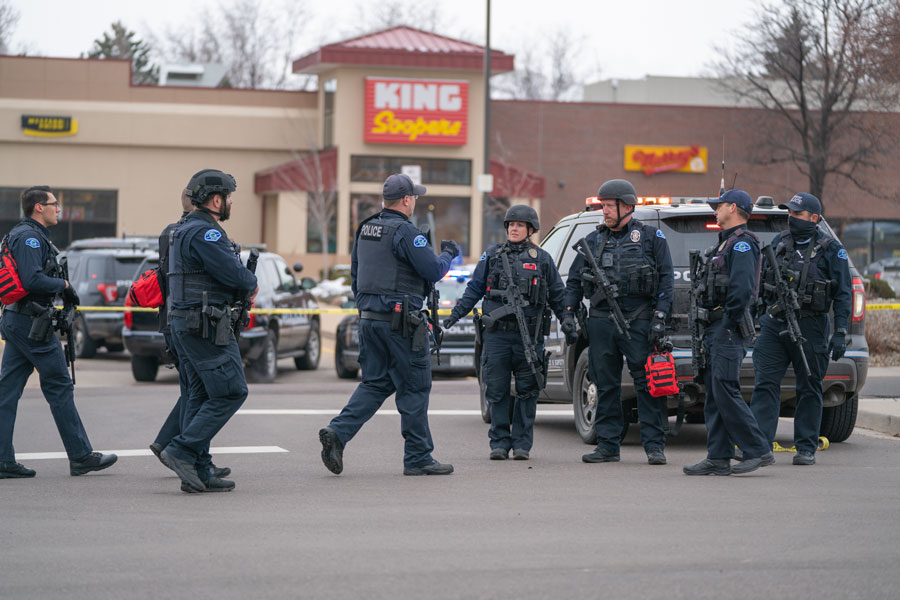
NEW YORK, NY – America has a mass shooting problem. In less than 48 hours this week, two gunmen went on shooting rampages at both ends of California that left 18 dead and 10 wounded. (http://magnumcompanies.co/)
Mass shootings have been a tragic and all-too-common occurrence in the United States for many years. According to Gun Violence Archive, there have been over 200 mass shootings in the U.S. since 1982. The frequency of these incidents has increased in recent years, with several high-profile mass shootings occurring in the past decade.
One of the earliest and most notorious mass shootings in American history took place in 1966, when a man named Charles Whitman climbed to the top of the University of Texas tower and opened fire on innocent bystanders, killing 14 people and injuring 32 others. This event is often cited as the first “modern” mass shooting in the U.S., and it sparked a national conversation about gun control and the causes of mass shootings.
In the years that followed, there were several other high-profile mass shootings, including the 1984 shooting at a McDonald’s in San Ysidro, California, where 21 people were killed, and the 1999 shooting at Columbine High School in Colorado, where 13 people were killed.
In recent years, mass shootings have become even more frequent and deadly. In 2012, a man named Adam Lanza killed 26 people, including 20 children, at Sandy Hook Elementary School in Connecticut. In 2016, a man named Omar Mateen killed 49 people at a gay nightclub in Orlando, Florida. In 2017, a man named Stephen Paddock killed 58 people and injured more than 500 others at a music festival in Las Vegas. On May 24, 2022, an 18-year-old man killed 19 students and two teachers and wounded 17 individuals at Robb Elementary School in Uvalde, TX, using an AR-15-style rifle. Outside the school, he fired shots for about 5 min before entering the school through an unlocked side door and locked himself inside two adjoining classrooms killing 19 students and two teachers.

These tragic events have led to renewed calls for stricter gun control laws and better mental health resources in the United States. However, the issue of mass shootings remains highly divisive, with some arguing that stricter gun laws would infringe on Second Amendment rights, while others argue that the availability of firearms is a major contributing factor to the frequency and deadliness of mass shootings in the U.S.
Gun control laws in the United States have been a contentious and polarizing issue for many years. The Second Amendment to the United States Constitution guarantees the right to bear arms, and this has been interpreted by the Supreme Court to mean that the federal government cannot infringe on this right. However, the interpretation of this amendment has been a subject of debate and has led to a wide range of state and federal laws regulating the ownership, possession, and use of firearms.
One of the earliest federal gun control laws in the U.S. was the National Firearms Act of 1934, which imposed a tax on certain types of firearms and required that they be registered with the federal government. This law was passed in response to the rise of organized crime during the prohibition era.
In 1968, the Gun Control Act was passed, which expanded the category of prohibited persons and prohibited the importation of certain types of firearms deemed not suitable for sporting purposes. And in 1993, the Brady Handgun Violence Prevention Act was passed, which established a background check system for firearms purchases and transfers.

In recent years, there have been several high-profile mass shootings in the United States, which have led to renewed calls for stricter gun control laws. These calls have included measures such as universal background checks, bans on certain types of firearms and accessories, and red flag laws, which allow law enforcement to temporarily seize firearms from individuals deemed to be a danger to themselves or others.
Opponents of stricter gun control laws argue that such measures would infringe on Second Amendment rights and would not effectively reduce the frequency of mass shootings. They argue that the problem of gun violence is rooted in issues such as mental health and societal breakdown, and that stricter gun laws would only serve to punish law-abiding citizens while doing little to stop criminals from obtaining firearms. (https://www.designzillas.com/)
While federal and state laws regulating the ownership, possession, and use of firearms have been passed in the past, the interpretation of the Second Amendment and the effectiveness of these laws remain a source of debate. The issue of gun control continues to be a pressing public health concern, with renewed calls for stricter laws in the wake of recent mass shootings.

According to the National Library of Medicine, the USA has had 57 times as many school shootings as all other major industrialized nations combined. Guns are the leading cause of death for children and teens in the USA, with children ages 5–14 being 21 times and adolescents and young adults ages 15–24 being 23 times more likely to be killed with guns compared to other high-income countries.
While the causes of mass shootings are complex and multifaceted, the issue remains a source of intense debate and continues to be a pressing public health concern as a solution remains elusive.



Comments are closed.